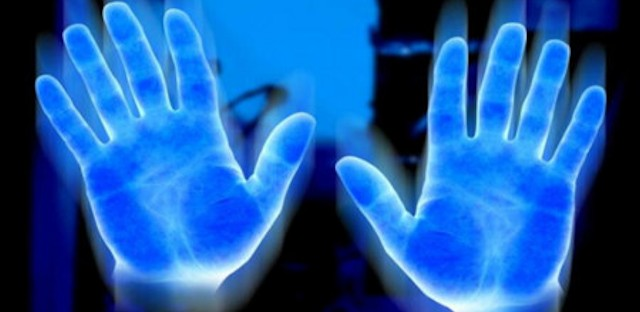Light and Human Health
The Phenomenon of Biophotons: Light's Role in Human Existence and Communication
In recent times, scientific understanding has begun to align with the poetic depths of human experience, hinting that we are not just complex arrangements of atoms and molecules, but also creatures of light. Biophotons, a form of light emitted by the human body, have been found to play a role in mental intention, cell-to-cell communication, and even DNA processes.
The staggering wonder of our existence often escapes us, neglecting the realization that existence itself is a rarity. The question lingers: Why does a universe exist, conscious of itself through us, instead of an unfeeling void?
Consider that our bodies, comprised of light, air, water, and minerals from the Earth's crust, are formed through a process that encapsulates information stored within a single diploid zygote cell. Contained within this miraculous form is a soul, capable of attempting to comprehend the interplay between its physical and spiritual origins.
Given the profound nature of our existence and our dependence on sunlight transformed into nourishment, it's not entirely implausible that our bodies emit light. Indeed, the human body emits biophotons, also known as ultraweak photon emissions (UPE). These particles of light, although invisible to the naked eye, belong to the visible electromagnetic spectrum (380-780 nm) and can be detected using advanced instrumentation.
The Human Eye: Emitting Light Beyond Sight
The human eye, subjected to ambient photons that traverse various ocular tissues, emits visible light-induced ultraweak photon emissions. Some theories propose that visible light triggers delayed bioluminescence in exposed eye tissues, potentially explaining the origin of negative afterimages.
These light emissions have been linked to cerebral energy metabolism and oxidative stress within the brain. However, recent findings challenge the notion that biophoton emissions are mere byproducts. The Bókkon hypothesis suggests that brain-generated photons produce biophysical images during visualizations. A study even revealed that actively imagining light in darkness led to increased ultraweak photon emissions. This supports the idea that biophotons may serve as a means for the mind to create intrinsic biophysical images during visual perception and imagery.
Biophotons: Cellular Communication and DNA's Light
Biophotons seem to serve as a means of communication between cells in various living organisms, enabling energy and information transfer faster than chemical diffusion. Studies show that biophoton communication occurs in plants, bacteria, animal neutrophil granulocytes, and kidney cells. Light stimulation has been found to generate biophotons that travel along neural fibers, potentially acting as neural communication signals.
Even at the molecular level, DNA appears to emit biophotons. Some experts suggest that DNA's dependence on biophotons grants it excimer laser-like properties, allowing it to maintain stability far from thermal equilibrium.
A biophoton, technically an elementary quantum of light originating non-thermally, can be emitted from biological systems due to energy metabolism or biochemical reactions involving active oxygen species.
Circadian Biophoton Output
Since the body's metabolism follows a circadian rhythm, biophoton emissions also fluctuate throughout the day. Research identifies specific anatomical regions emitting stronger or weaker biophotons based on time:
Photon counts over the body are lower and steadier in the morning, whereas the upper extremities and head region emit more photons throughout the day. Spectral analysis of emissions from various body parts indicates major emission at 470-570 nm. These fluctuations offer insights into peroxidative and anti-oxidative processes.
Impact of Meditation and Herbs on Biophoton Emissions
Studies indicate that meditation reduces ultra-weak photon emissions, possibly due to decreased free radical reactions in the body. Rhodiola, an herb known for stress reduction, demonstrated a decline in photon emission in human subjects, suggesting its impact on oxidative stress.
Human Skin: A Receptor of Solar Energy and Information
Remarkably, human skin cells might capture solar energy and information from ultraviolet radiation. Research revealed higher ultraweak photon emissions from skin cells when exposed to artificial sunlight. Melanin, responsible for converting UV light to heat, raises the question of its potential to transform UV radiation into biologically useful energy forms.
Water, the Key Player
Water, constituting most of the body's molecules, may store solar energy and drive physiological processes. Water's ability to trap sunlight energy is akin to batteries, enabling it to power various bodily functions as a primary source of energy.
Solar and Lunar Influences on Biophoton Emission
The Sun and Moon appear to affect biophoton emissions through gravitational forces. Biophoton emissions from wheat seedlings synchronized across continents based on lunisolar tides, with the Sun and Moon jointly influencing gravitational acceleration.
The Power of Intention
Even the mysterious phenomenon of human intention might find its basis in biophotons. Studies propose that intentions emit light particles (biophotons) as a mechanism for their effects. Organisms emit constant photon currents to transmit signals and store biophotons within intracellular DNA. Intentions, as coherent frequencies, potentially alter molecular structures and the environment, leading to the potential to influence healing and wellbeing.
In summary, scientific evidence aligns with human experience, suggesting that we are more than mere physical constructs. We are beings that emit, communicate through, and are formed from light—a revelation that may reshape biological and medical paradigms.

